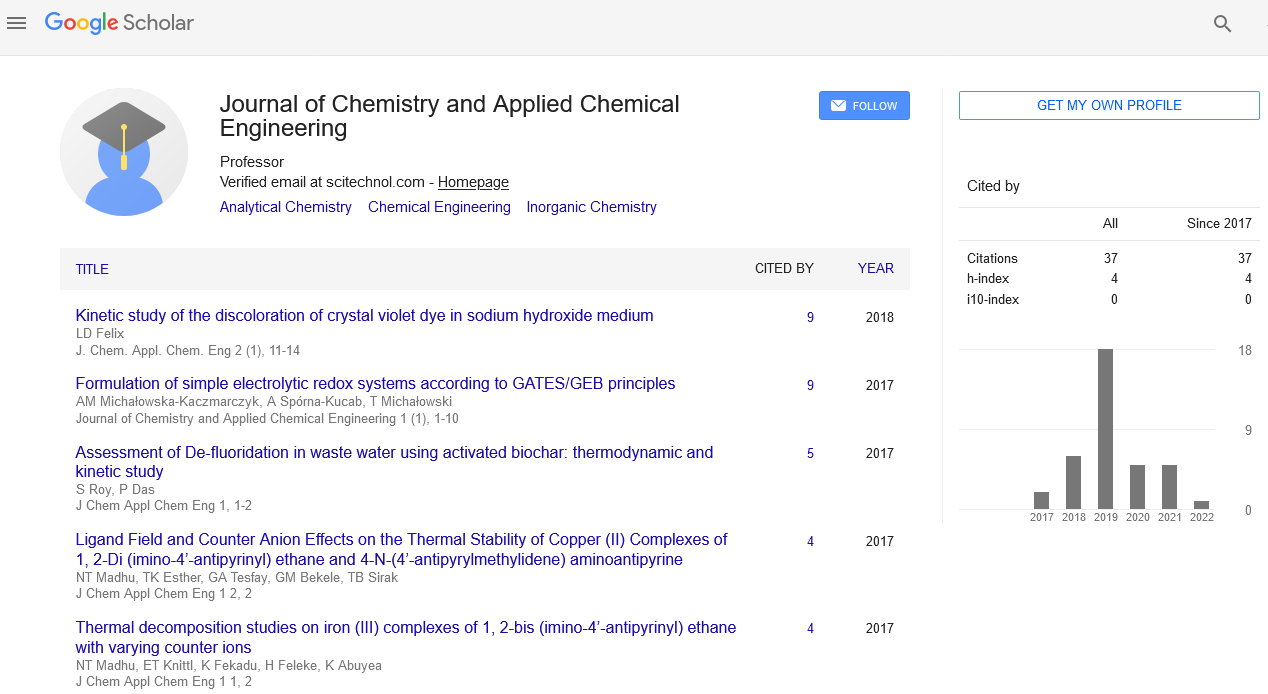Editorial, J Chem Appl Chem Engl Vol: 9 Issue: 1
Wastewater Treatment in Chemical Engineering
Neha Kapoor*
Department of Chemical Engineering, Jadavpur University, Kolkata, India
- *Corresponding Author:
- Neha Kapoor
Department of Chemical Engineering, Jadavpur University, Kolkata, India
E-mail: neha.kapoor@jaduniv.edu
Received: 01-Mar-2025, Manuscript No. JCACE-25-170222; Editor assigned: 4-Mar-2025, Pre-QC No. JCACE-25-170222 (PQ); Reviewed: 20-Mar-2025, QC No JCACE-25-170222; Revised: 26-Mar- 2025, Manuscript No. JCACE-25-170222 (R); Published: 30-Mar-2025, DOI: 10.4172/Jcace.10000
Citation: Neha Kapoor, Department of Chemical Engineering, Jadavpur University, Kolkata, India. J Chem Appl Chem Engl 9:1.
Copyright: © 2025 Neha Kapoor, this is an open-access article distributed under the terms of the Creative Commons Attribution License, which permits unrestricted use, distribution, and reproduction in any medium, provided the original author and source are credited.
Abstract
INTRODUCTION
Wastewater treatment is a crucial area where chemical engineering principles are applied to protect environmental and public health. Modern research emphasizes sustainable and energy-efficient treatment methods.
Key Research Areas
Biological Treatment: Activated sludge and biofilm reactors [1].
Advanced Oxidation Processes (AOPs): Effective for degrading recalcitrant pollutants [2].
Membrane Bioreactors (MBRs): Combining biological treatment with membrane separation [3].
Adsorption Techniques: Activated carbon and nanomaterials for pollutant removal [4].
Zero-Liquid Discharge (ZLD) Systems: Recovering water for reuse [5].
REFERENCES
- Gates BC. Catalytic Chemistry. Wiley. 1912.
- Levenspiel O. Chemical Reaction Engineering. Wiley. 1991.
- Froment GF, Bischoff KB. Chemical Reactor Analysis and Design. Wiley. 1990.
- Kunii D, Levenspiel O. Fluidization Engineering. Butterworth-Heinemann. 1991.
- Crowl DA, Louvar JF. Chemical Process Safety. Pearson. 2011.
 Spanish
Spanish  Chinese
Chinese  Russian
Russian  German
German  French
French  Japanese
Japanese  Portuguese
Portuguese  Hindi
Hindi 